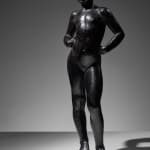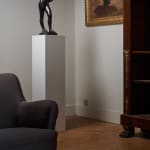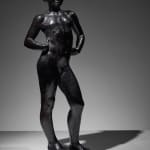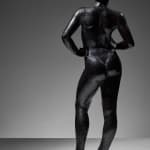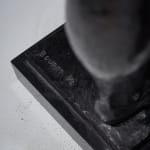Pierre Ernest Bouret
Marked with the foundry stamp ‘Cire perdue’ Valsuani
Further images
The sculptor Pierre Bouret (French, 1897-1972) is a commendable witness to the extraordinary quality of figurative sculpture in France between the two world wars.
It was based, on the one hand, on public and private art education that was among the most esteemed in the world (in fact, artists in training came from all over the world to benefit from the education provided by the Paris art schools and academies at the time) and on the other hand, on a fabric that was unique in Europe, with a wide range of artists from all over the world, a network of salons and galleries for contemporary art, unique in Europe, to support the creative activity of innovative artists. A highly developed system of purchases and commissions by the state, which has always supported artistic creations, especially those of sculptors. This reputation was further enhanced by a large number of art magazines and renowned art critics, and not least by the presence in Paris of the studios of Europe's most famous sculptors, both French and foreign.
Pierre Bouret is the pure product of this salutary combination of factors that made Paris an international artistic capital. Following his studies at the Ecole Bernard Palissy in Paris (1910-1912) and sculpture at the Ateliers d'Art Municipaux (1915), and later at the Cours Supérieur d'Art Décoratif de la Ville de Paris (1924-1925) given by the decorator Paul Follot, he was able to enjoy the benefits of this renowned French pedagogy.
Although he regularly exhibited his work in the Salon d'Automne, he also participated in the modernist creation of the Salon des Tuileries (1923), which had emerged as a reaction to the more official salons such as the Salon des Artistes français and the Salon de la Société Nationale des Beaux-Arts.
He soon became vice-president of the Salon des Tuileries and head of its sculpture department.
Because of his undeniable talent, Pierre Bouret regularly enjoyed the constant attention of the authorities throughout his career. From 1932 onwards, a dozen purchases and commissions from the French state and some 20 municipal commissions throughout France (Soissons, Barentin, Saint-Dizier, Villers-Cotterêts, Poissy, Vanves, Bernay, etc.) testify to this interest in his work. They are represented in the current sale by moving sketches and models, rare preparatory models and numerous variations.
Taking into account this feverish activity and especially his unquestionable quality, the influential art critics of the time did not refrain from including Pierre Bouret's amazing personality in the most famous works on the history of French sculpture of the period, such as "La Sculpture française contemporaine", published in 1944 by René Letourneur, or "Les Jeunes sculpteurs français", published in 1945 by Waldemar George. The international press also took an interest in him, for example Barnett D. Conlan, the well-known British art critic of the Continental Daily Mail, who on 25 September 1952 wrote one of the most perceptive analysis of Pierre Bouret's art, presenting him as one of the sculptors of his generation with the most natural sense of stone and the most accurate understanding of it.
The model for "Adolescente", Odette, was the artist's sister-in-law, the younger sister of his second wife, Denise. The sculpture exists in three different dimensions:
-
Pierre Bouret first created the 70-cm-high sculpture of "Adolescente" in 1934-1936. A bronze proof of this sculpture was bought from the artist in 1939: initially deposited in the collections of the Musée National d'Art Moderne, it is now in the Musée Despiau-Wlérick in Mont-de-Marsan. A terracotta edition of the statue on this scale was made in 1945.
-
Between 1934 and 1936, the artist made a reduction of "Adolescente" to a height of 48 cm, which was published in 1965.
-
Finally, Pierre Bouret made a stone enlargement of his work in 1937. According to information from the Fonds National d'Art Contemporain, this large stone version of "Adolescente", which was bought from the artist in 1937, had been in the collections of the Musée des Beaux-Arts and Dentelle de Calais since 1939, but was destroyed by bombing during World War II.
"Adolescente" can be considered the artist's masterpiece: it is reproduced in René Letourneur's reference work, "La sculpture française contemporaine", published in 1944.
Provenance
Collection of the artist's descendantsLiterature
Chappey, F., Le sculpteur Pierre Bouret (1897-1972) : « l’ouvrier du ciseau », disciple et ami de Charles Despiau: L’art c’est la vérité sensible à condition que notre émotion soit assez fortement exprimée pour se communiquer, 2018





